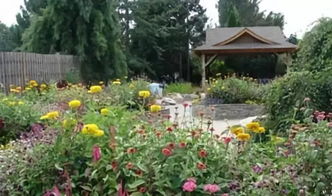园艺疗法活动的设计
Special Needs Children Horticultural Therapy Design
Horticultural therapy, also known as gardening therapy, is a therapeutic tool that utilizes plantrelated activities in a controlled environment to improve cognitive, physical, social, emotional, and spiritual wellbeing. When it comes to special needs children, horticultural therapy can be particularly beneficial in enhancing their overall development and quality of life. Designing a horticultural therapy program specifically tailored for special needs children requires careful planning and consideration.
1. Understanding the Needs of the Children
Before designing a horticultural therapy program, it is essential to have a clear understanding of the specific needs, abilities, and challenges of the special needs children who will be participating. Consider factors such as sensory sensitivities, physical limitations, cognitive abilities, and emotional triggers.
2. Creating a Safe and Accessible Environment
The therapy space should be safe, accessible, and inclusive for all children, regardless of their disabilities. Consider using raised garden beds, adaptive tools, nontoxic plants, and smooth pathways to ensure that children with mobility challenges or sensory sensitivities can participate comfortably.
3. Incorporating Sensory Stimulation
Given that special needs children often have sensory processing disorders, incorporating sensory stimulation in the form of textures, smells, colors, and sounds can be highly beneficial. Choose a variety of plants with different textures and scents to engage the children's senses.
4. Providing Structured Activities
Structured activities such as planting seeds, watering plants, weeding, and harvesting can help special needs children develop essential skills such as fine motor skills, handeye coordination, sequencing, and following instructions. Keep the activities simple, engaging, and ageappropriate.
5. Promoting Social Interaction
Horticultural therapy provides an excellent opportunity for special needs children to interact with their peers, therapists, and caregivers in a relaxed and supportive environment. Encourage collaboration, communication, sharing, and teamwork during gardening activities.
6. Encouraging Emotional Expression
For many special needs children, expressing emotions can be challenging. Gardening can serve as a medium for emotional expression, allowing children to connect with nature, express themselves through creative activities, and develop a sense of accomplishment and pride.
Implementing a welldesigned horticultural therapy program for special needs children can result in a wide range of benefits, including:
- Improved motor skills and coordination
- Enhanced sensory integration
- Increased selfesteem and confidence
- Stress reduction and relaxation
- Positive social interactions
- Emotional regulation and expression
- Cognitive stimulation and problemsolving skills

Designing a horticultural therapy program for special needs children requires a thoughtful and individualized approach that takes into account the unique abilities and challenges of each child. By creating a safe, engaging, and inclusive environment that promotes sensory stimulation, structured activities, social interaction, and emotional expression, horticultural therapy can play a transformative role in enhancing the wellbeing and development of special needs children.
